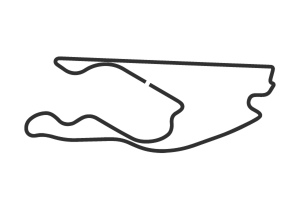Regulations remain relatively stable for 2020 but there are a few small tweaks. More forgiving with penalties and the return of shark fins, here is your guide to the changes ahead of the new season.
‘Shark fins’
'Shark fins' along with 'T-Wings' were banned from use on Formula One cars for 2019. However, McLaren used a smaller version of the device during the early part of the season to more easily display the driver's number to fans. To this effect, the fin is now mandatory for 2020.
With little to no aerodynamic effect on the overall car performance, this change is simply an aesthetic one.
Less testing
Down from eight days to six days of pre-season in Barcelona while in-season testing is now completely gone.
With the 2020 cars likely to be an evolution of their 2019 counterparts, the removal of in-season testing will more likely be viewed as a cost saving measure than anything else.
A relaxing of weighbridge and jump start penalties
In recent seasons, regulations have meant that, should a driver fail to spot that they have been called into the weighbridge and drive straight past, stewards have had no choice but to penalise the driver in question with a pit lane start.
This year, stewards have been given more discretion with the penalties at their disposal.
In a similar way, jump starts are now not a slam-dunk ten second stop-go penalty. Now, a simple five or ten-second time penalty can be added to a drivers race time.
No screens for testing
Privacy is gone. Usually, teams will put up screens or close the garage doors while working on their car or trialing new components during pre-season testing. For 2020, this is banned.
Unless recovering a car from the track or working with the floor off the car, the garage must be open and visible for all to see.
Chequered flag at the end of races
In 2019, the chequered flag was a simple ceremonial tool and did not indicate the end of the race. This task was instead fulfilled by a light box.
For 2020, the flag is reinstated.
A problem in the system at the Japanese Grand Prix caused mass confusion as the box lit a lap early and the final race result was left unconfirmed for some time after.
Longer curfew An hour longer in bed for mechanics. Teams may still only break this twice in a season before receiving a penalty.
The driver now controls 90% of the engine torque through a "pull-type" paddle.
An extra MGU-K After nine drivers exceeded their MGU-K allocation in 2019, an extra element has been allowed for 2020.
Less fuel outside the tank Down from two litres, only 250ml is permitted to be anywhere other than in the fuel safety cell at any one time.
Related
















































 Grand Prix du Canada 2025
Grand Prix du Canada 2025  Grand Prix of Austria 2025
Grand Prix of Austria 2025  Grand Prix of Belgium 2025
Grand Prix of Belgium 2025  Grand Prix of Hungary 2025
Grand Prix of Hungary 2025  Grand Prix of Azerbaijan 2025
Grand Prix of Azerbaijan 2025  Grand Prix of Singapore 2025
Grand Prix of Singapore 2025  Gran Premio de la Ciudad de Mexico 2025
Gran Premio de la Ciudad de Mexico 2025  Grande Prêmio de São Paulo 2025
Grande Prêmio de São Paulo 2025  Qatar Grand Prix 2025
Qatar Grand Prix 2025  Grand Prix of Abu Dhabi 2025
Grand Prix of Abu Dhabi 2025 